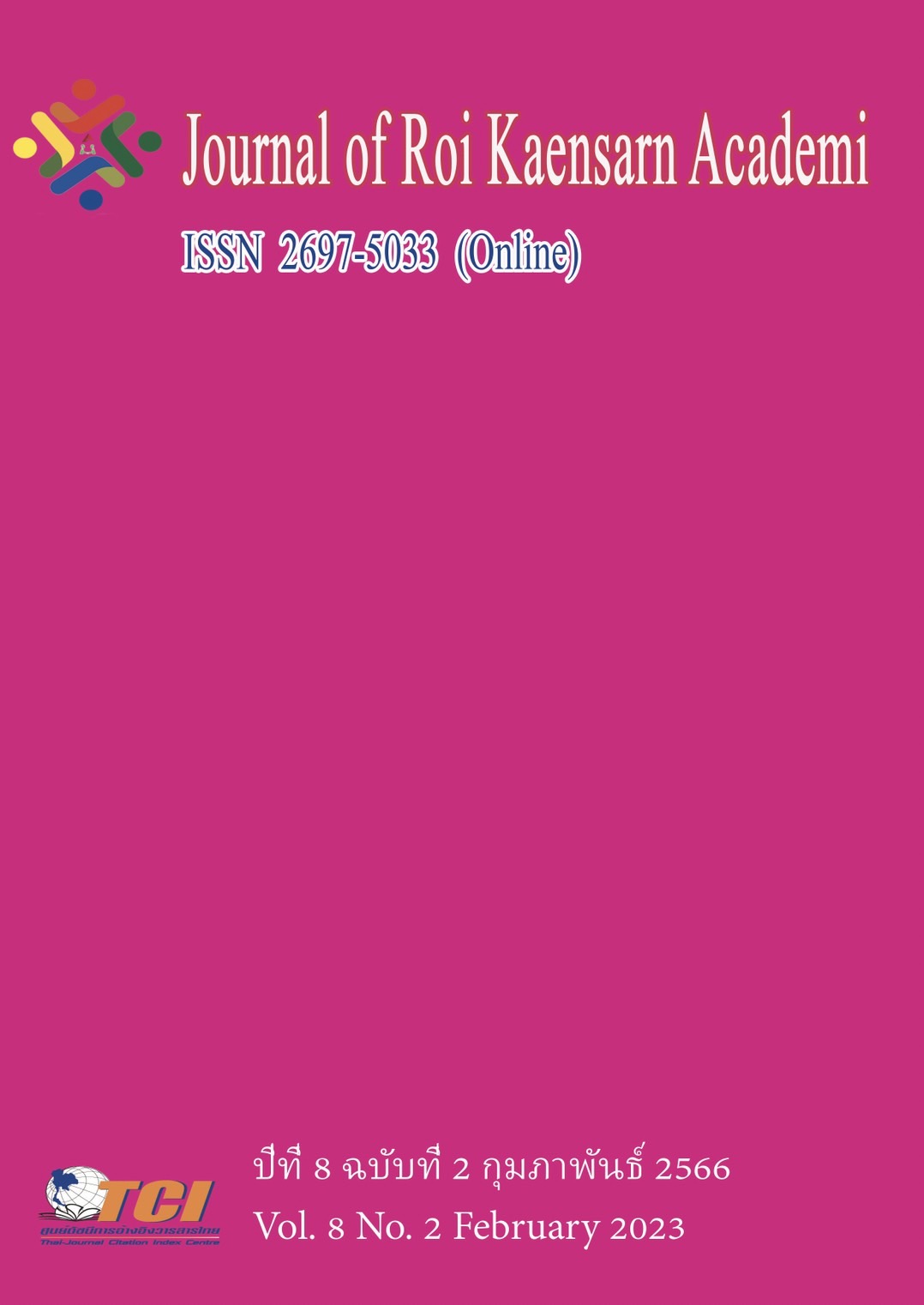ผลของการรับรู้อันตรายจากการขับรถยนต์: การศึกษานำร่อง
Main Article Content
บทคัดย่อ
งานวิจัยนี้มีวัตถุประสงค์เพื่อ 1) พัฒนากิจกรรมทดสอบการรับรู้อันตรายสำหรับการขับรถในบริบทการจราจรของเมืองไทย 2) เปรียบเทียบความแตกต่างของค่าเฉลี่ยเวลาการตอบสนองของพฤติกรรมการรับรู้อันตรายในกลุ่มที่แตกต่างกันในเพศ อายุ ระยะทางในการขับรถ และรูปแบบของการรับรู้อันตราย การวิจัยนี้เป็นแบบเชิงทดลอง โดยกลุ่มตัวอย่างเป็นประชาชนทั่วไปที่สามารถขับรถได้และมีใบขับขี่ อายุระหว่าง 22-45 ปี จำนวน 40 คน สุ่มกลุ่มตัวอย่างเข้ากลุ่มทดลองโดยจำแนกตามเพศ อายุ และระยะทางในการขับรถ เครื่องมือที่ใช้วิจัยประกอบด้วย คลิปวีดีโอที่แบ่งตามชนิดการรับรู้อันตรายและโปรแกรม SR Research Experiment Builder เพื่อสร้างโปรแกรมการทดสอบและบันทึกเวลาการตอบสนองผ่านการคลิ๊กเมาส์ วิเคราะห์ข้อมูลด้วยสถิติเชิงบรรยาย สถิติทดสอบที (t-test) และสถิติไร้พารามิเตอร์ Kruskal-Wallis Test
ผลการวิจัยพบว่า 1) กลุ่มเพศชายและเพศหญิง และกลุ่มช่วงอายุ 22-34 ปี และช่วงอายุ 35-45 ปี ไม่มีความแตกต่างของค่าเฉลี่ยเวลาตอบสนอง 2) กลุ่มผู้เข้าทดสอบที่มีระยะทางในการขับรถในช่วง 10,000-60,000 กม. มีค่าเฉลี่ยเวลาตอบสนองมากกว่ากลุ่มที่มีระยะทางในการขับรถในช่วง 60,001-320,000 กม. อย่างมีนัยสำคัญทางสถิติที่ระดับ .05 และกลุ่มตัวอย่างที่ทำการทดสอบอันตรายชนิดการคาดการณ์อันตรายจากพฤติกรรมที่แสดงออก (Behavioral Prediction Hazard) มีค่าเฉลี่ยเวลาตอบสนองมากกว่ากลุ่มตัวอย่างที่ทำการทดสอบอันตรายชนิดการคาดการณ์อันตรายจากสิ่งแวดล้อม (Environmental Prediction Hazard) อย่างมีนัยสำคัญทางสถิติที่ระดับ .05 3) นำกลุ่มผู้เข้าทดสอบมาแบ่งเป็น 4 กลุ่ม ตามระยะทางในการขับรถและชนิดการรับรู้อันตราย และเปรียบเทียบรายกลุ่ม พบว่ากลุ่มที่มีระยะทางในการขับรถในช่วง 10,000-60,000 กม. และทดสอบอันตรายจากพฤติกรรมที่แสดงออก (Behavioral Prediction Hazard) มีค่าเฉลี่ยเวลาตอบสนองมากที่สุด อย่างมีนัยสำคัญทางสถิติที่ระดับ 0.05
Article Details
เอกสารอ้างอิง
Castro, C. (2009). Human factor of visual and cognitive performance in driving. New York: Taylor & Francis Group.
Castro, C., Padilla, J. L., Roca, J., Benitez, I., Garcia-Fernandez, P., Estevez, B., Ramon, M. F., & Crundall, D. (2014). Development and Validation of the Spanish Hazard Perception Test. Traffic Injury Prevention, 15. 817-826.
Lim, P. C., Sheppard, E., & Crundall, D. (2014). A predictive hazard perception paradigm differentiates driving experience cross-culturally. Transportation Research Part F, 26, 210-217.
Mckenna, F. P., & Crick, J. L. (1997). Developments in hazard perception. Crowthorne, UK: Transport Research Laboratory.
McKenna, F. P., Horswill, M. S., & Alexander, J. L. (2006). Does anticipation training affect drivers' risk taking?. Journal of Experimental Psychology: Applied, 12(1), 1.
Pradhan, A. K., & Crundall, D. (2016). Hazard avoidance in young novice drivers: Definitions and a framework. In Handbook of teen and novice drivers (pp. 81-94). CRC Press.
Poliak, M., Svabova, L., Benus, J., & Demirci, E. (2022). Driver Response Time and Age Impact on the Reaction Time of Drivers: A Driving Simulator Study among Professional-Truck Drivers. Mathematics, 10(9), 1489.
Shen, S. & Neyens, D. M. (2015). The effects of age, gender, and crash types on drivers’ injury-related health care costs. Accident Analysis and Prevention, 77. 82-90.
Ventsislavova, P., Crundall, D., Baguley, T., Castro, C., Gugliotta, A., Garcia-Fernandez, P., ... & Li, Q. (2019). A comparison of hazard perception and hazard prediction tests across China, Spain and the UK. Accident Analysis & Prevention, 122, 268-286.
Wells, P., Tong, S., Sexton, B., Grayson, G., & Jones, E. (2008). Cohort II: a study of learner and new drivers. Volume 1—Main Report (Vol. 81). Road Safety Research Report.
Wetton, M. A., Hill, A., & Horswill, M. D. (2011). The development and validation of a hazard perception test for use in driver licensing. Accident Analysis and Prevention, 43. 1759-1770.

